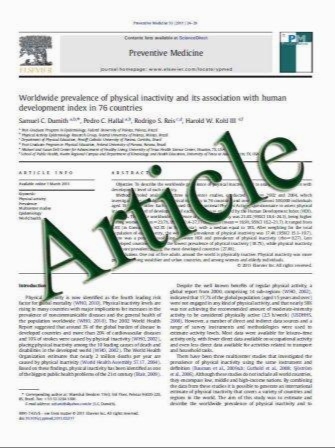Gender and age impacts on the correlations between hyperuricemia and metabolic syndrome in Chinese
- نوع فایل : کتاب
- زبان : انگلیسی
- مؤلف : Qing Zhang & Shanshan Lou & Zhaowei Meng & Xiaojun Ren
- چاپ و سال / کشور: 2011
Description
Prevalence of both metabolic syndrome (MS) and hyperuricemia are increasing. However, findings regarding their relationships are inconsistent. We aimed to explore correlations between MS and hyperuricemia in a large Chinese population, emphasizing the impacts from gender and age. Data analyses were performed in 17,762 subjects randomly recruited from Tianjin municipality in China. Hyperuricemia was defined as serum uric acid (SUA) >420 ƒتmol/L for men, >360 ƒتmol/L for women. MS was diagnosed by the consensus criterion released in 2009 from a joint collaboration between American Heart Association and other organizations. MS was also diagnosed by Chinese Diabetes Society (CDS) criterion. Total hyperuricemic prevalence was 12.16%, with male significantly higher than female. Total MS prevalence by consensus criterion was much higher than by CDS criterion (25.56% versus 14.09%). Correlation coefficients were much greater in women than in men. SUA was significantly positively related with body mass index and waist circumference. Generally, binary logistic regression models disclosed females with high SUA were twice likely to suffer from MS than males. Young females (.44 years old) with hyperuricemia had the highest odd ratio of 7.857 by consensus criterion; and after further adjustment by bodymass index, this odd ratio was 3.040. SUA and MS were much more closely related in females than in males. Young women with hyperuricemia had the highest risk of MS.
Clin Rheumatol (2011) 30:777–787 Received: 15 July 2010 / Revised: 7 December 2010 / Accepted: 8 December 2010 / Published online: 22 December 2010


